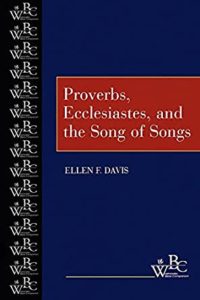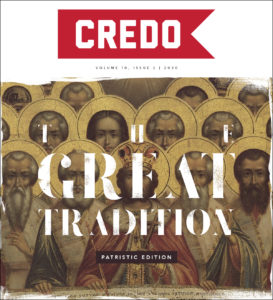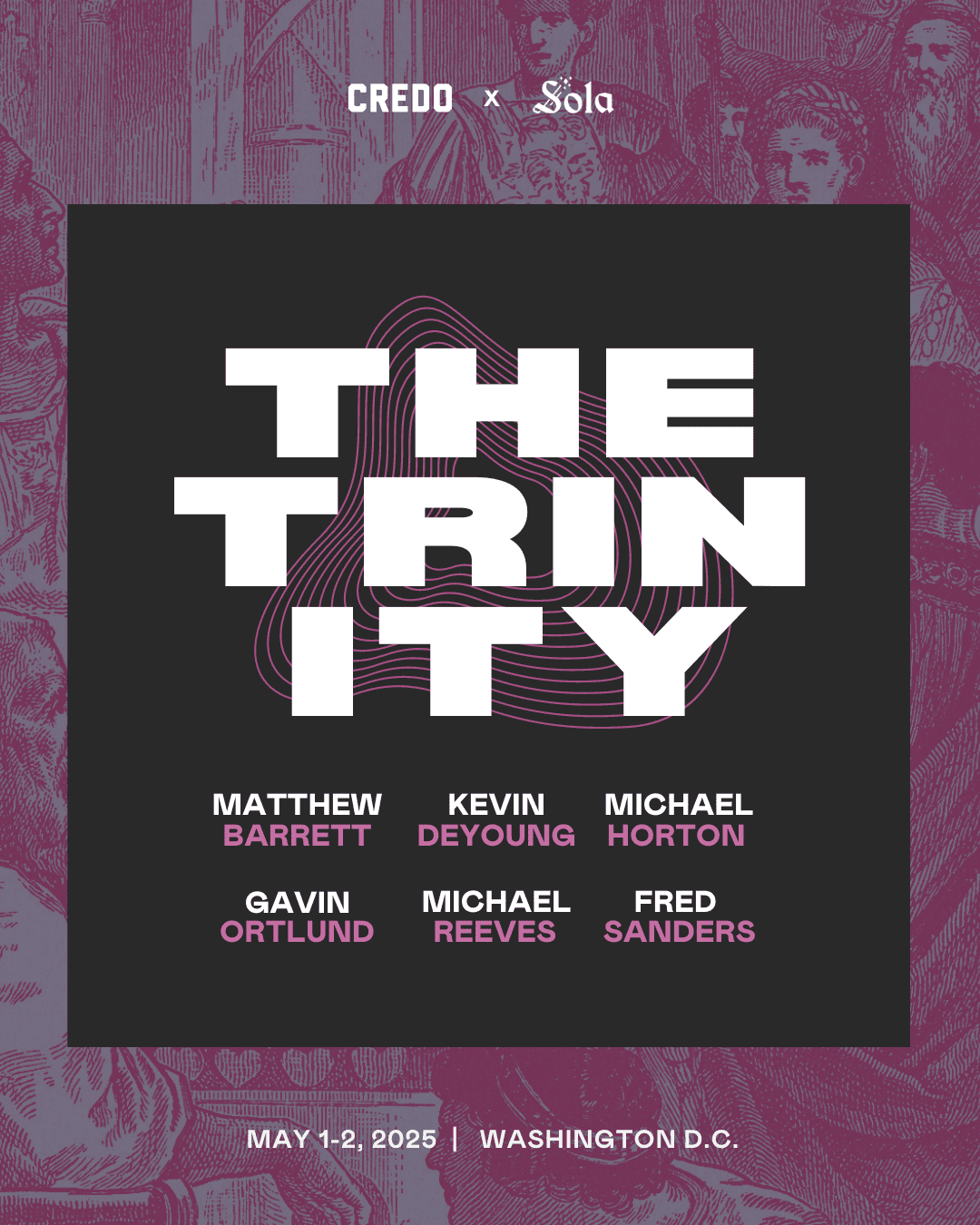What do we do with the Song of Songs? Many scholars have differing interpretations on its writer, when it was written, and why it was written. Is it one, unified song or a compilation of songs? This book found right in the middle of our Bibles is thought by some to be the most secular book in Scripture and by others the most biblical of Old Testament texts. Although the Song has enjoyed much popularity in the past—many have even looked to the Song to help them interpret other parts of Scripture—today many avoid it. How often do you quote from the Song of Songs to encourage, exhort, or teach a brother or sister in the faith? This year, it was even parodied in the popular Babylon Bee featuring imaginary Valentine’s Day Sweetheart candies with messages such as “UR Breasts = Fawns” and “Hey, Tower Neck!” It’s funny because it really speaks to our awkwardness with handling the language in the Song.
 There are many contributions published that teach from the Song of Songs. We have Bernard of Clairvaux and Gregory of Nyssa’s beautiful sermons, and later Charles Spurgeon’s sermons. We have the edition of The Church’s Bible, edited by Robert Wilken, which is a collection of highlights from early Christian and medieval commentators on the Song. Michael Fox analyzes the parallels between the Song and Ancient Egyptian love songs. Jill Munro has an excellent book studying the Song’s poetic language. David Dorsey published fascinating work on the “Literary Structuring of the Song of Songs.” And we have a plethora of commentaries on this superlative Song. As I am studying the Song, one of my favorite go-to commentaries is in Ellen F. Davis’s Proverbs, Ecclesiastes, and the Song of Songs (Westminster John Knox Press, 2000). It’s only 71 pages of commentary, but she unearths some of the richest treasures in the Song. I wish it were longer and yet I like how it provokes my own study to build upon it.
There are many contributions published that teach from the Song of Songs. We have Bernard of Clairvaux and Gregory of Nyssa’s beautiful sermons, and later Charles Spurgeon’s sermons. We have the edition of The Church’s Bible, edited by Robert Wilken, which is a collection of highlights from early Christian and medieval commentators on the Song. Michael Fox analyzes the parallels between the Song and Ancient Egyptian love songs. Jill Munro has an excellent book studying the Song’s poetic language. David Dorsey published fascinating work on the “Literary Structuring of the Song of Songs.” And we have a plethora of commentaries on this superlative Song. As I am studying the Song, one of my favorite go-to commentaries is in Ellen F. Davis’s Proverbs, Ecclesiastes, and the Song of Songs (Westminster John Knox Press, 2000). It’s only 71 pages of commentary, but she unearths some of the richest treasures in the Song. I wish it were longer and yet I like how it provokes my own study to build upon it.
In her short commentary, Davis is not aiming for academic engagement with all the key thinkers representing the different positions of the Song. But she satisfactorily presents her own views to set up her commentary, which can be read more devotionally. She is among the many contemporary scholars who break from the ancient tradition that the Song was written by Solomon, given the literary evidence of a later writing (fifth to third century B.C.E.) and that the author was likely a Hellenistic Jew. She also entertains the suggestion by more and more scholars that the writer is a woman, as the female voice is dominant in the Song. Not only that, women are frequently associated with the Song in the Scriptures. But no one knows for sure who wrote the Song under the inspiration of the Holy Spirit. And although Davis doesn’t believe it to be Solomon, she still sees him as an important figure in the Song, as his world “figures importantly in the lover’s imaginations, both positively and negatively.” Most significantly, Davis thinks the Song is attributed to him due to his association with the Temple, which is a prominent theme in the Song.
How Do We Read the Song?
Does Davis follow the interpretation of the early church fathers up through the 19th century, fathers who believed that the Song is an allegory of Christ’s love for his bride, the Church (or the individual believer’s soul)? Or does Davis follow the more modern interpretation that the Song is to be taken literally to teach God’s people about virginity, marriage, and sex? Davis contests that the Song is profoundly revelatory, saturated in Old Testament images and in conversation with its writers, and deeply intimate, showcasing God’s love for Israel, the church, and the individual soul. But it also speaks to the intimacy of human love. We were created for intimacy with God and one another. And so, she says, “I hope to show that the sexual and the religious understandings of the Song are mutually informative, and that each is incomplete without the other.” For instance, as its language and images highlight the “lushness of sexual exclusivity,” understanding this “healthy sexual desire can help us imagine what it might mean to love God truly,” which comes less naturally to us. There are many contributions published that teach from the Song of Songs. We have Bernard of Clairvaux and Gregory of Nyssa’s beautiful sermons, and later Charles Spurgeon’s sermons. Share on X
Unlike both old and modern commentators, Davis does not look at each line in the Song as a code to be cracked. We don’t need to allegorize every line or reduce its metaphorical language to a how-to guide. She emphasizes the Song’s theological importance, revealing the metanarrative of Scripture. It is rife with the images of Eden, not to take us back, but to move us forward to the ultimate garden of delight to which Eden was pointing. And this is why the significance of the Temple is so important. As Solomon’s name points us to our own peace in the true King Jesus Christ, his name mentioned in this superlative Song of all songs reminds us of his “‘superlative achievement,’ that place of ultimate sanctity and deepest awe. Further, perhaps the title suggests that the Song is one way of entering that holy place—even, the only way” (240). That makes you want to continue reading, doesn’t it?
But still, how do we read this Song? It doesn’t seem to have a linear narrative. Davis does treat it as a unified piece. And yet she isn’t going to explain every line to us, as the Song can’t be analyzed like that. Rather, as you read the Song, it’s a lot like being in a dream—the scenes and characters shift abruptly with no explanation. Pieces of images are not developed and at times seem random. Davis insists that this genre is pushing us to use our religious imagination, dive deep into the waters of the Song, and make connections. The Song imitates a dream in the sense that “its images are deeply contextualized. Their roots can be traced into ancient Near Eastern religion, art, literature, and history, and the physical geography of Israel, as well as through many books of the Old Testament. Like our most important dreams, the Song reaches far back in order to say something startlingly new.” With its themes of absence and presence, we peek into the most intimate relationship that transforms the woman from someone who has “not been able to make herself desirable for her lover” (SoS 1:6), to seeking, finding, and clinging to the one whom her soul loves. And in his eyes, she finds herself “as a city that actively makes peace” (SoS 8:10).
The Typology of the Woman
And this is one of the richest treasures found in the Song—the typology of the woman. She bursts onto the scene in the Song “longing for love” (SoS 1:2-4, 241) with “messianic hope” (SoS 1:3, 242), using the “language of public worship” (SoS 1:4, 243). In these verses, we can see the woman as the bride Israel, longing for the kisses of the divine mouth. And the plural here, kisses, can point to the giving of his word, the Divine Lover’s physical presence in the incarnation, or the kiss we still long for as the church, the bride of Christ—to behold our Savior in glorified bodies. Don’t we find ourselves singing with her? “Oh, that he would kiss me with the kisses of his mouth!” (SoS 1:2a). She is singing about the anointed one (SoS 1:3). And Davis points out that from the beginning we see the evangelical dimension of the Song in 1:4, “We will rejoice and be glad in you; we will celebrate your caresses more than wine.” This language reminds us of Psalm 118:24 and Isaiah 25:9. “This celebration of love is intensely personal yet also, paradoxically, a public event, in which this woman gladly shares with ‘the maidens’ (v.3) her rejoicing in the ‘the king.’” This Song enfleshes the metanarrative of Scripture. Share on X
So, this bride can signify Israel. She also points to the church, and even the individual soul of the believer. Davis notes that we see the promise of restoration from Hosea 14:4-7 echoed in the Song. But that is not all. This Song enfleshes the metanarrative of Scripture. As Davis aptly brings to light just how saturated the Song is with the Scriptures, we see how theological it is, startling us through its dialogue between the woman and the man—and also with its questions. “Who is this coming up from the wilderness like columns of smoke, scented with myrrh and frankincense from every fragrant powder of the merchant?” (SoS 3:6). “The question resounds deeply with the biblical tradition of Israel entering into the Promised Land after forty years in the wilderness.” But it also uses the tabernacle language of columns of smoke and frankincense which was used with sacrificial offering, a “pleasing odor to the Lord” (Lev. 6:15). “The woman who is ‘coming up’ thus appears in dual aspect, as both the one who offers sacrifice to God and the perfumed offering itself.” The application is almost too good to be true: “when we come before God in true worship, God sees us, not as dutiful, but as beautiful, even irresistible, like a bride perfumed for her husband.”
We continue to be startled. In the center of the Song, the Groom praises seven parts of his bride’s body, and their resulting dialogue in lovemaking reveals more typology of the woman (SoS 4:1-5:1). But “when we finish reading it, we have no idea what the woman looks like.” The language and imagery associates the woman with sacred space, as he “make[s his] way to the mountain of myrrh and the hill of frankincense” (SoS 4:6). “The lover hastens like an eager pilgrim to the spice mountains, and image that beautifully evokes both the curves of the female body and the Holy Mount in Jerusalem, where the strong odors of myrrh and frankincense call to remembrance the people Israel’s intimacy with their God.” In this section, we see this typology of the woman as bride/garden/Zion. The bride is inviting her Groom in, and in this we experience what our hearts, minds, bodies, and souls long for—full intimacy with God. Don’t you see it? It’s a song—the Song of all songs—because it shows us why we even sing at all! It brings us to the place of “consummate satisfaction.”
An Evangelical Call
Again, as the Song closes we have a metaphor of the woman as a city at peace (SoS 8:10). She is “‘Daughter/Fair Maiden Zion (Bat Zion, Ps. 9:14; Isa. 37:22; Jer. 6:23) or ‘my daughter-people’ (Jer. 6:26).” I wish Davis would have spent more time on the last verses of the Song, where the Groom exhorts his bride to use her voice—his companions are listening for it and his last words to her are “let me hear it” (SoS 8:13). As it opened, the Song closes with an evangelical call. And just as the woman’s voice opens the song, she also closes it beckoning for her Groom, calling him to the spiced mountains which her own body represents. The Song calls us all to Zion and provokes our longing and encourages our hope. I’ll close with Davis’s words, calling to mind the theme of desire in the Song:
God never fully satisfies us in this world but continually stretches our desire toward heaven. Not satisfaction but expansion and purification of holy desire is the surest sign of God’s presence with us. So the art of the spiritual life is the art of learning to live with longing, with eager expectation that God’s presence will be felt yet again in our hearts, in our midst, and always in new ways. (302)


